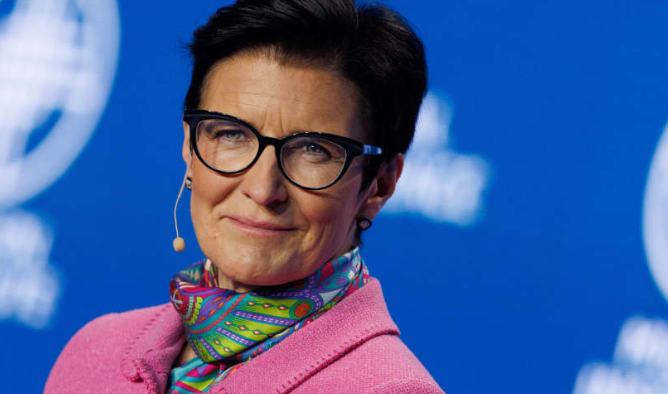Jane Fraser, the CEO of Citigroup, unveiled a corporate restructuring on Wednesday, claiming that it will streamline management and speed up decision-making.
- ESSENTIAL POINTS
- Jane Fraser, the CEO of Citigroup, unveiled a corporate restructuring on Wednesday, claiming that it will streamline management and speed up decision-making.
- According to current and former workers, Citigroup’s old organizational structure led to conflicts between management and a lack of responsibility that occasionally sabotaged new efforts.
- People with knowledge of the situation say that although the corporation hasn’t settled on a specific number, the revisions would involve job cutbacks.
Citigroup will be split into five key business lines, each of which will answer directly to Jane, according to a press statement. The company once had two primary segments that catered to individual customers and significant institutional clients. According to those with knowledge of the situation, the adjustments would involve job losses, but the New York-based corporation hasn’t settled on a specific number.

Fraser, who will soon complete her third full year as Citigroup’s CEO, is working to resuscitate a company beset by a protracted stock decline. Even while Citigroup trails JPMorgan Chase and Bank of America in terms of assets, it is still far less present in domestic retail banking than its rivals. That explains in part why Citigroup has had difficulty after the end of the 2008 financial crisis.
ALSO READ: Bombay Dyeing Will Sell A 22-Acre Plot Of Property In Worli, Mumbai, For Rs. 5,200 Billion
“These changes eliminate unnecessary complexity across the bank, increase accountability for delivering excellent client service and strengthen our ability to benefit from the natural linkages that exist amongst our businesses, all with an eye toward delivering on our medium term market ,” Jane said.

According to current and former workers, Citigroup’s old organizational structure led to conflicts between management and a lack of responsibility that occasionally sabotaged new efforts. According to Wells Fargo analyst Mike Mayo, the corporate structure traces back to Sandy Weill’s time as Citigroup’s CEO twenty years ago.
U.S. personal banking, wealth management, investment and commercial banking, trade, and institutional services are the five businesses. Ernesto Torres Cant was given control of the management of Fraser’s non-American companies.
Even while the CEO reduced Citigroup’s global footprint as well, leaving more than a dozen markets, including Mexico, it wasn’t enough. Since Jane became CEO in March 2021, Citigroup’s stock has dropped by roughly 40%, which is the poorest performance among her major bank competitors.
According to Mayo, who wrote a note last week titled “What’s Going on with Citigroup Stock,” Citigroup trades for the lowest value among its peer American large banks, and at approximately $41 per share, the stock is at levels last seen before the 2008 financial crisis.

As Wall Street activity has decreased, some competitors have been cutting workers, but Citigroup has increased staff as it complies with regulators’ requests to strengthen risk controls. In June, the bank had 240,000 employees, a 4% increase over the same month last year.
In a note to her team, Jane discussed the impending job losses and promised that her restructuring will be finished by the first quarter of 2019.
Fraser added, “We’ll be saying goodbye to several extremely smart and diligent coworkers who have made significant contributions to our company.
Citigroup CEO janes makes sweeping management changes to simplify bank
In an effort to streamline the bank, Citigroup CEO Jane Fraser has proposed a significant management restructuring that would give her more direct control over its operations.
The five divisional chiefs of the bank will now answer directly to Fraser. Shahmir Khaliq, who oversees services, Andrew Morton, who oversees markets, Peter Babej, who oversees investment and corporate banking temporarily, Gonzalo Luchetti, who oversees U.S. consumer banking, and Andy Sieg, who will oversee wealth when he joins the business later this month, are some of them.The five divisional chiefs of the bank will now answer directly to Fraser. Shahmir Khaliq, who oversees services, Andrew Morton, who oversees markets, Peter Babej, who oversees investment and corporate banking temporarily, Gonzalo Luchetti, who oversees U.S. consumer banking, and Andy Sieg, who will oversee wealth when he joins the business later this month, are some of them.
image source: google




































